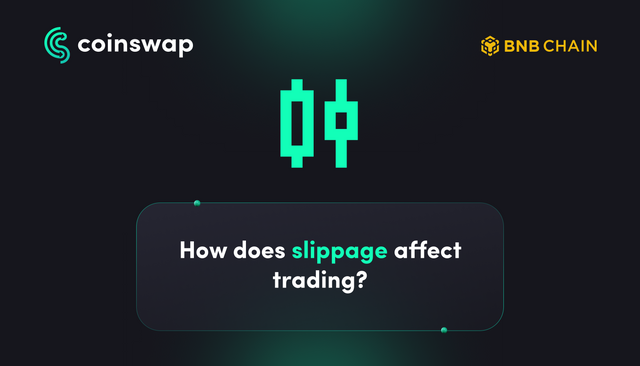How Slippage Can Affect Your Trading

📈💰💸📉🚨
Slippage is a common term in trading that refers to the difference between the expected price of a trade and the actual price at which the trade is executed. In simple terms, slippage occurs when a trader places an order to buy or sell an asset at a particular price but ends up buying or selling the asset at a different price due to market volatility or other factors. Slippage can be both positive or negative, but in most cases, it is a negative phenomenon that affects the profitability of a trade.
📉📉📉
Negative slippage occurs when the actual execution price of a trade is lower than the expected price in the case of a sell order or higher than the expected price in the case of a buy order. Negative slippage can occur due to various reasons such as low liquidity in the market, high market volatility, delayed order execution, or technical issues with the trading platform.
💸💸💸
The impact of negative slippage on trading can be significant, especially for short-term traders who rely on quick profits. Negative slippage can increase trading costs, reduce profits, or even turn a profitable trade into a loss-making one. For example, if a trader places a sell order for $100 expecting to earn a profit of $10, and ends up selling the asset at $98 due to negative slippage, the trader will lose $2, which is the difference between the expected price and the actual execution price.
📈📈📈
On the other hand, positive slippage occurs when the actual execution price of a trade is better than the expected price, resulting in a lower trading cost or higher profits. Positive slippage can occur in rare cases where the market conditions are favorable or when there is a delay in the execution of the order.
🚨🚨🚨
To minimize the impact of slippage on trading, traders can adopt various strategies such as using limit orders instead of market orders, reducing the trading volume during high market volatility, using stop-loss orders to limit losses, and selecting a reliable and fast trading platform. Traders can also choose to trade during the low volatility periods or use hedging strategies to protect against slippage.
💰💰💰
In conclusion, slippage is an inevitable phenomenon in trading that can have a significant impact on the profitability of a trade. Negative slippage is more common than positive slippage and can result in increased trading costs, reduced profits, or even losses. To minimize the impact of slippage, traders should adopt various strategies, including using limit orders, reducing trading volume, and selecting a reliable trading platform. By understanding the concept of slippage and adopting the right trading strategies, traders can improve their trading performance and achieve their financial goals.
Experience a whole new kind of trade, swap, stake, and farming at Coinswap Space! 🚀 www.coinswap.space